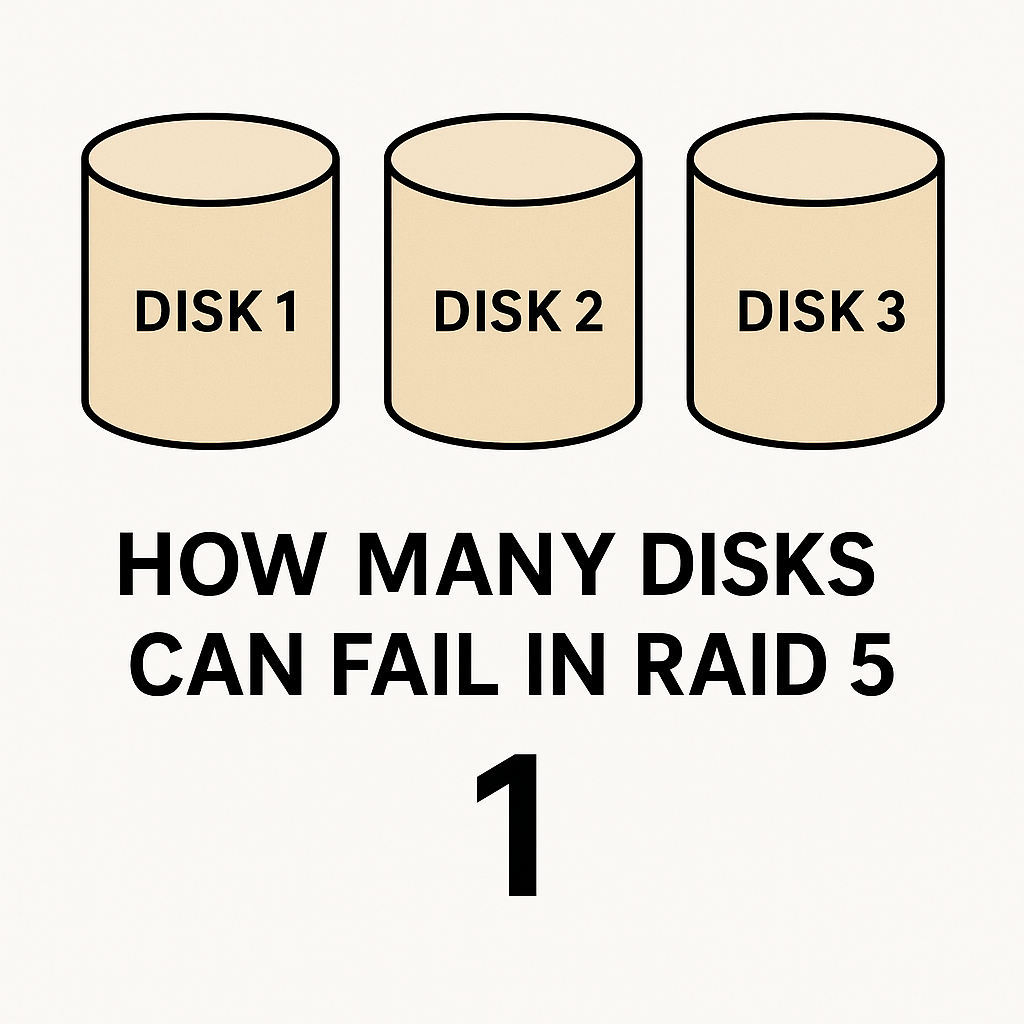How Many Disks Can Fail in RAID 5? Understanding the Limits and Solutions
1. Introduction
RAID 5 is a popular configuration among system administrators and IT professionals due to its balance between performance, storage efficiency, and fault tolerance. However, understanding its limitations, especially regarding disk failures, is crucial for data integrity and system reliability.(Trenton Systems)
2. What is RAID 5?
RAID 5 (Redundant Array of Independent Disks) utilises block-level striping with distributed parity. This means data and parity information are spread across all disks in the array. The parity information allows the system to reconstruct data in case of a single disk failure.(Wikipedia)
3. Fault Tolerance in RAID 5
RAID 5 can tolerate the failure of only one disk. If a single drive fails, the system can rebuild the lost data using the parity information from the remaining disks. However, if two or more disks fail simultaneously, the RAID 5 array becomes unrecoverable, leading to potential data loss.
“Regardless of how many drives are in use, a RAID 5 array only allows for recovery in the event that just one disk at a time fails.”
(Server Fault)
4. Risks of Multiple Disk Failures
While RAID 5 provides redundancy, it’s not immune to multiple disk failures. Factors increasing this risk include:
- Simultaneous Disk Failures: Disks from the same batch or with similar usage patterns may fail around the same time.
- Rebuild Stress: During the rebuild process after a disk failure, the remaining disks are under increased load, which can lead to additional failures.
- Delayed Replacement: Not replacing a failed disk promptly increases the window of vulnerability.
5. Preventive Measures
To mitigate the risks associated with RAID 5:
- Regular Monitoring: Use monitoring tools to keep an eye on disk health and receive alerts for any issues.
- Prompt Replacement: Replace failed disks immediately to reduce the risk of additional failures.
- Consider RAID 6: For environments where data availability is critical, RAID 6 offers the ability to withstand two simultaneous disk failures.(Trenton Systems)
6. Conclusion
RAID 5 offers a good balance between performance and redundancy but has its limitations. Understanding that it can only tolerate a single disk failure is crucial. Implementing proactive monitoring and maintenance strategies can help prevent data loss. For higher fault tolerance, consider alternative RAID configurations like RAID 6.

FAQs
Q1: Can I recover data if two disks fail in RAID 5?
A1: Typically, no. RAID 5 can only tolerate one disk failure. If two disks fail, data recovery becomes complex and may require professional services.(Diffen)
Q2: How many disks are required to set up RAID 5?
A2: A minimum of three disks is required to configure a RAID 5 array.
Q3: Is RAID 5 suitable for critical data storage?
A3: While RAID 5 offers redundancy, for critical data, RAID 6 or other configurations with higher fault tolerance are recommended.
Q4: How long does it take to rebuild a RAID 5 array after a disk failure?
A4: Rebuild time varies based on disk size and system load, but can take several hours to days. During this time, the system is vulnerable to additional failures.
Q5: Can I use disks of different sizes in RAID 5?
A5: It’s possible, but the array’s total capacity will be limited by the smallest disk in the configuration.